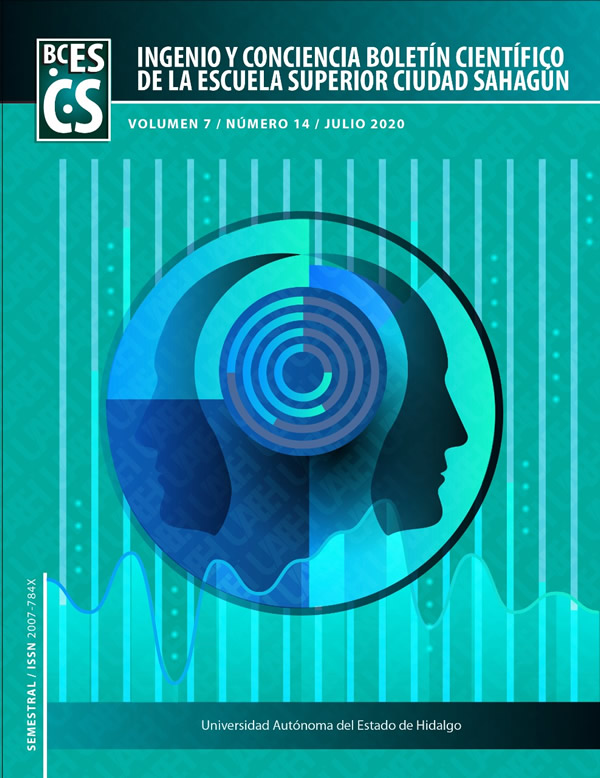Thermochemical treatments
Abstract
In the present work, a very general description of the main thermochemical treatments used to improve the surface properties of various substrates is given. Surface engineering represents a technically attractive and economically viable method for improving the surface layer of materials. Since the surface of the material controls the useful life in many applications, the aim is to develop a wide range of functional properties that are different from the base substrate, including physical, chemical, electrical, electronic, magnetic or mechanical. As part of surface engineering, thermochemical treatment uses thermal diffusion to incorporate non-metallic or metallic atoms on the surface of the substrate to modify its chemistry and microstructure. The thermochemical treatments can be performed on solid, liquid or gaseous media with one or more active chemical elements simultaneously. For most thermochemical treatments, the mechanism includes the decomposition of solid, liquid or gaseous species, the division of gaseous molecules to form nascent atoms, the absorption of atoms, their diffusion in a metallic network and reactions within the substrate structure to modify existing phases or form new ones.
Downloads
References
Davis, J. R. (2002) Surface Hardening of Steels: Understanding the basics. OHIO: ASM International.
Lampman, S. (1991). Introduction to Surface Hardening of Steels. In Heat Treating (Vol. 4, pp. 259-267). ASM Handbook.
Díaz del Castillo, F. (2007). Endurecimiento superficial del acero. In Lecturas de ingeniería (Vol. 1, p. 48). Ciudad de México, México: FES-Cuautitlán.
Judith C. Chow, Jian Zhen Yu, John G. Watson, Steven Sai Hang Ho, Theresa L. Bohannan, Michael D. Hays & Kochy K. Fung (2007) The application of thermal methods for determining chemical composition of carbonaceous aerosols: A review, Journal of Environmental Science and Health, Part A, 42:11, 1521-1541, DOI: 10.1080/10934520701513365
Zhen-Yu Xi, You-Yi Xu, Li-Ping Zhu, Yue Wang, Bao-Ku Zhu, A facile method of surface modification for hydrophobic polymer membranes based on the adhesive behavior of poly(DOPA) and poly(dopamine), Journal of Membrane Science, 327 (2009) 1–2, P. 244-253.
Budiniski, K. G. (1988). Surface Engineering for Wear Resistance. Prentice-Hall.
Amelse, J. A., Butt, J. B., Schwartz, L. H., Carburization of supported iron synthesis catalysts, The Journal of Physical Chemistry, 82 (1978) 5; 558-563. https://doi.org/10.1021/j100494a012
S. Geng, W. Ding, S. Guo, X. Zou, Y. Zhang, X. Lu. (2015) Carbon deposition on iron surfaces in CO–CO2 atmosphere. Ironmaking & Steelmaking 42:9, pages 714-720.
Tong, W. P., Tao, N. R., Wang, Z. B., Lu, J., Lu, K., Nitriding Iron at Lower Temperatures, Science, 299 (2003) 686-688, http://science.sciencemag.org/content/299/5607/686.abstract
Hudis,M., Study of ion‐nitriding, Journal of Applied Physics, 44 (1973) 1489-1496, https://doi.org/10.1063/1.1662398
E. Bezerra de Menezes Netto, Madeira Kliauga, A., Plaut, R., & Padilha, A. (2003). Liquid, gaseous and plasma nitrocarburizing using three different stainless steel types as a substrate (austenite, ferritic and duplex): A comparative study. Revue De Métallurgie, 100(1), 83-91. doi:10.1051/metal:2003149
K. Genel, Boriding kinetics of H13 steel, Vacuum, 80 (2006) 5, Pages 451-457, https://doi.org/10.1016/j.vacuum.2005.07.013
K. Genel, I. Ozbek, C. Bindal, Kinetics of boriding of AISI W1 steel, Materials Science and Engineering: A, 347 (2003) 1–2, Pages 311-314, https://doi.org/10.1016/S0921-5093(02)00607-X.
I. Campos, J. Oseguera, U. Figueroa, J.A Garcı́a, O. Bautista, G. Kelemenis, Kinetic study of boron diffusion in the paste-boriding process, Materials Science and Engineering: A, 352 (2003)261-265, https://doi.org/10.1016/S0921-5093(02)00910-3.
Graf von Matuschka, A. (1980). Boronizing, Munich: Carl Hanser Verlag
Sinha, A. K.. Boriding (Boronizing). En ASM Handbook (Vol. 4) (1991) (pp. 437 – 447). Ohio: ASM International.
Gopalakrishnan, A., K.K. Lal and A.G. Ponniah, 1999. Conservation of the Nilgiri rainbow trout in India. Naga, ICLARM Q. 22(3):16-19.
Sørensen, Mads R., Jacobsen, Karsten W., Jónsson, Hannes, Thermal Diffusion Processes in Metal-Tip-Surface Interactions: Contact Formation and Adatom Mobility, Physical Review Letters, 77 (1996) 5067-5070.
Eyre, T. S. (1975). Effect of boronising on friction and wear of ferrous metals Wear, 34(3), 383-397.
Singhal, S. C. (1977). A hard diffusion boride coating for ferrous materials. Thin Solid Films, 45,
V. Y. Skeeba et al., "Numerical Modeling of Steel Surface Hardening in the Process of High Energy Heating by High Frequency Currents", Applied Mechanics and Materials, 698 (2015) pp. 288-293.
N.Y. Sari, M. Yilmaz, Investigation of abrasive+erosive wear behaviour of surface hardening methods applied to AISI 1050 steel, Materials & Design, 27 (2006) pp. 470-478, https://doi.org/10.1016/j.matdes.2004.11.020.
Zenker, R., & Mueller, M. (1988). Electron Beam Hardening,Part I, Principles, Process Technology and Properties. In Heat Treat. Met. (Vol. 15, pp. 79-88).
Zenker, R., John, W., Rathjen, D., & Fritsche, G. (1989). Electron Beam Hardening, Part 2, Influence on Microstructure and Properties. In Heat Treat. Met. (Vol. 16, pp. 43-51).
Krauss, G. (1992). Advanced Surface Modification of Steels. Journal of Heat Treating, 9(2), 81-89.
Davis, J.R., (2001), Surface Engineering for Corrosion and Wear Resistance, ASM International, US
Robert B. Heimann, Thermal spraying of biomaterials, Surface and Coatings Technology, 201 (2006) pp. 2012-2019, https://doi.org/10.1016/j.surfcoat.2006.04.052
J.C Tan, L Looney, M.S.J Hashmi, Component repair using HVOF thermal spraying, Journal of Materials Processing Technology, 92–93 (1999) pp. 203-208, https://doi.org/10.1016/S0924-0136(99)00113-2.
Frigaard, Ø., Grong, Ø. & Midling, O.T. Metall and Mat Trans A (2001) 32: 1189. https://doi.org/10.1007/s11661-001-0128-4
Jae-Hyung Cho, Donald E. Boyce, Paul R. Dawson, Modeling strain hardening and texture evolution in friction stir welding of stainless steel, Materials Science and Engineering: A, 398 (2005), pp. 146-163, https://doi.org/10.1016/j.msea.2005.03.002.
O. O. Diniz Neto, R. Vilar, Physical–computational model to describe the interaction between a laser beam and a powder jet in laser surface processing, Journal of Laser Applications, 14 (2002) pp 46-51, https://lia.scitation.org/doi/abs/10.2351/1.1436485
J.G. Smeggil, A.W. Funkenbusch, N.S. Bornstein, The effects of laser surface processing on the thermally grown oxide scale formed on an Ni-Cr-Al-Y composition, Thin Solid Films, 119 (1984) pp. 327-335, https://doi.org/10.1016/0040-6090(84)90016-6.











